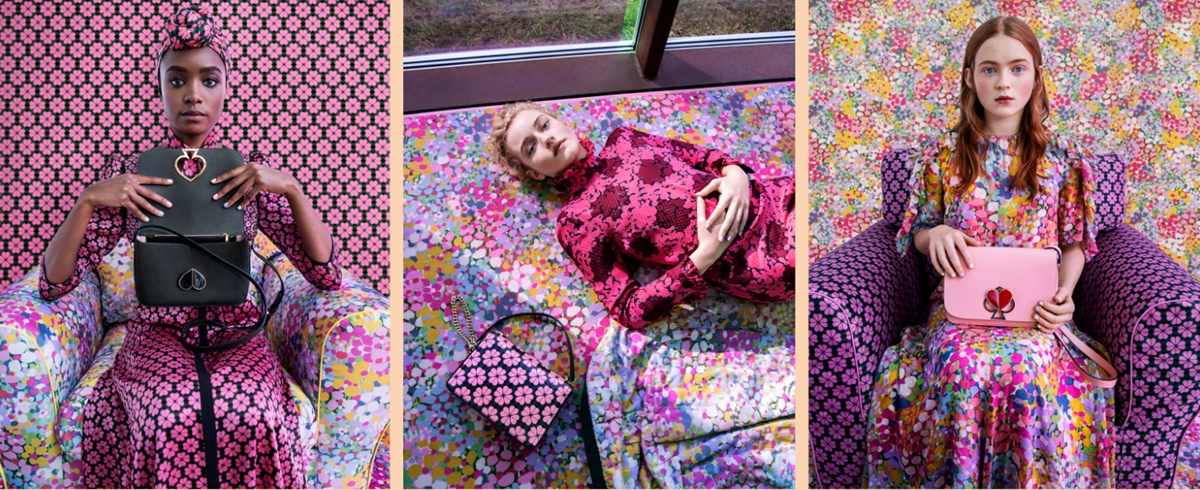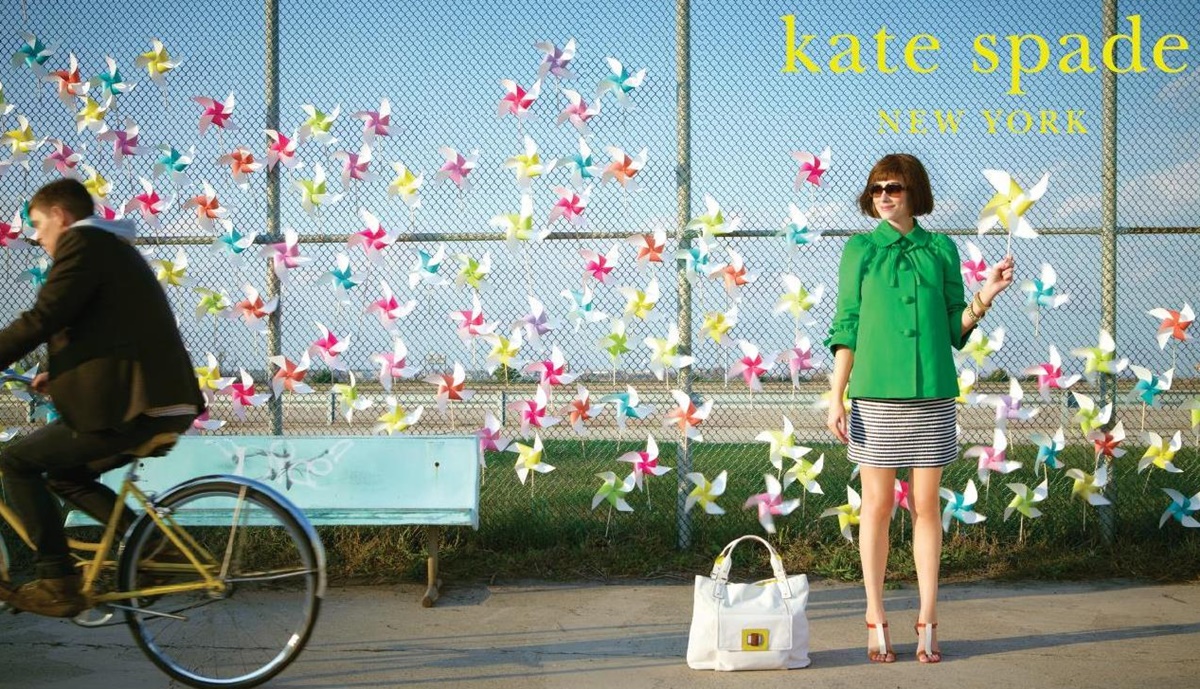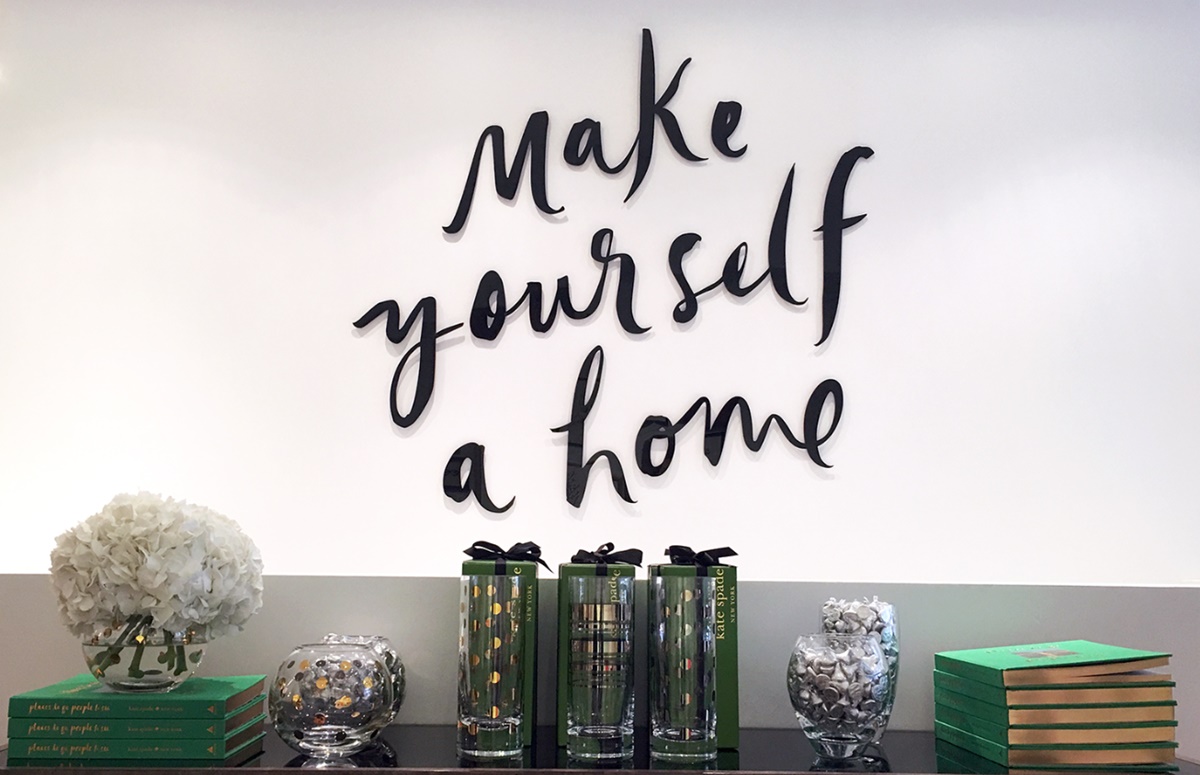Kate Spade Advertising Strategy - A Fashion Industry Icon
Kate Spade had a natural gift for designing handbags that appeal to women of all ages. She and the brand quickly expanded to other products like shoes, jewelry, and apparel. The New York Times called her signature handbags a symbol of coming of age ritual for American women. Kate Spade was truly a fashion icon that people could carry at every stage in their lives.
Much like the revolutionary characteristics of Kate Spade, the brand never settles its advertising content to be just a shot of the product or a celebrity toting a bag on the shoulder. It is bold, bright, and colorful, like anything can happen for women. Since 1993, the company has successfully promoted this unique image around the world.
How did Kate Spade become a fashion industry icon like that? How did Kate Spade’s advertising strategy make it stand out in such a fierce market? That is what we will answer in this article. If you are thinking about starting your own fashion business, I advise you to take notes. Let’s get started!
Related Posts
Introduction

Kate Spade is a fashion brand established in 1993 by fashion designer Katherine Noel Valentine Brosnahan Spade (Kate Spade herself) and her husband/business partner Andy Spade. The core philosophy of the brand came from Kate’s desire for women handbags to be aesthetically pleasing and practical. In the early 1990s, the initial products had classic shape and fabric, but then evolved into the iconic square design with lively colors. During the time, the company targeted the upper-middle-class women and gained much success.
In 1996, Kate Spade won the American New Fashion Talent award in accessories and opened the first store in New York. The brand has experienced explosive growth ever since, with sales totaling $27 million in 1998. By 2006, the company’s revenue was reported to be nearly $99 million, with a total value estimated at $134 million. In 2017, Tapestry, Inc. bought Kate Spade for $2.4 billion.
Through its time, Kate Spade has expanded the product lines many times, from only selling handbags to ready-to-wear items and a jewelry line. Now, the brand even got into homeware, tech accessories, and glassware. The brand has over 180 stores worldwide, and its items are available in more than 400 stores worldwide.
The founder Kate Spade was not a board member since 2006 but continued to be an inspiration. She passed away in 2018, with all stores nationwide showing condolence in weeks later. The brand is still ever-evolving with vibrant diversity and colorful products.
Kate Spade SWOT analysis

Strength - Weakness - Weaknesses - Threats (SWOT) analysis is an interactive process that can evaluate various departments within a company such as finance, marketing, operations, strategic planning, and information systems. The central purpose of this analysis is to identify the strategies a company can use to utilize its resources and markets.
Kate Spade Strengths
- Successful track record of developing new products as well as product innovation.
- Good returns on capital expenditure: good innovation generated good returns by building new revenue streams.
- Strong brand portfolio: With almost 30 years of experience, the brand kept a strong reputation in fashion and innovation. This is extremely useful if it wants to expand to new product categories.
- Highly skilled workforce through learning programs and successful training. The employees are not only highly skilled but also motivated to contribute more.
- Automation of activities brought the consistency of quality to the brand’s products and allowed the company to scale based on the condition of the market.
- Successful record of integrating complementary firms through mergers or acquisitions. This helps streamline the operations and build a reliable supply chain.
- The brand’s products are highly successful as the Go-to items in many fields. If you think of a colorful women handbag, Kate Spade immediately comes to mind.
Kate Spade Weaknesses
- Investment in Research and Development of Kate Spade is below the fastest growing players on the market. It appears to be a mature company looking to create products based on tested features in the market.
- Not very good at product demand forecasting leading to more missed opportunities and higher inventory both in-house and in international warehouses.
- Organizational structure is compatible with the present business model, only thus limiting the expansion.
- The high attrition rate in the workforce, which means more money spent on training and employee development.
- Limited success outside core business - Even though Kate Spade was successful with product innovation, it still faces challenges in moving to other product segments.
Kate Spade Opportunities
- Opening up of new markets on the world, especially with the government free trade agreement.
- The new technology provides an opportunity to practice differentiated pricing strategy in the new market. This lets the firm maintain loyal customers with great services and lure in new customers.
- New trends in consumer behavior open new markets for the company with new revenue streams.
- New customers from online channels and social media. Kate Spade can know the customers better through big data analytics.
- Decreasing the cost of transportation because of lower shipping costs can bring down the cost to boost profitability or gain more market share.
- Government green drive also opens new opportunities for Kate Spade to expand and have consistency in production.
Kate Spade Threats
- New technologies developed by competitors or market events can threaten the fashion industry in the medium to long future.
- Increasing trends toward domestic production can lead to a negative impact on international sales.
- The demand for highly profitable products can be seasonal and unlikely even during the peak season can impact Kate Spade’s sales.
- Growing strengths of local distributors can also be a threat since competition can pay higher margins to local distributors.
- The shortage of skilled workers in global markets is a threat to steady growth on a global scale.
- No regular supply of truly innovative products: Over the year, Kate Spade has developed numerous new products, but they are often responsive to other players’ development. The tactic can lead to high and low swings in the sales numbers based on the customers’ views.
- As the company opiates in numerous countries, it is exposed to currency fluctuations given the volatile climate in markets across the world.
- The company can face lawsuits in many different markets with different laws and continuous fluctuations regarding the product standards
Kate Spade marketing mix

With a playful and sophisticated style, Kate Spade reflects its philosophy in many aspects of the marketing mix, which eventually affects the brand’s advertising strategy. In this part, we will take a look at Kate Spade’s marketing mix of Product - Price - Place - Promotion.
Product
- Its products are perceived to be of high quality in the fashion industry, so customers are willing to pay a higher price.
- Kate Spade sells its products in five broad categories with different product lines. All are provided under the brand name.
- The products are highly differentiated, with special features to offer. Therefore, Kate Spade’s products are considered to be unique.
- The products also have many varieties available so customers can select the ones that best suit their needs.
- Kate Spade’s products still continue the tradition of being uniquely designed but also practical to use.
Price
- The current pricing strategy of Kate Spade is a competitive based pricing strategy. With a large number of competitors existing in the industry, the company has a lot of accessible data on pricing to determine its own price.
- The price is often higher than many competitors for more features.
- For a few products that are not produced by competitors or unable to achieve information, Kate Spade takes cost into consideration for pricing.
- It currently prices products in bundles too to sell at a lower price than purchasing individually and encourage customers to purchase.
- An optional product pricing strategy is also used for certain products with the price of base products and separate prices for accessories.
- The products online have higher pricing because of the delivery costs, but this is being adjusted through times.
- The final products have fixed prices for retailers, wholesalers, and members.
Place
- Kate Spade sells its products through two marketing channels: the online website and different retailers located all over the world.
- The products are available in over 400 locations worldwide, which ensures that the products are available to customers in many parts of the world.
- It has a substantial amount of online sales with large traffic on the website. The company has partnered with many delivery service providers to provide a good delivery service.
- The company follows an omni-channel distribution system with integrated online and offline systems to allow easy access to the products.
- It has a huge network of suppliers with raw materials for production. Through the years, it has developed a close working relationship with the suppliers to keep innovating and introducing new features on its products.
Promotion
- Kate Spade uses multiple media channels to promote the brand, including traditional media like billboards or advertisements on tv and radio. This tactic reaches a large audience and attracts many prospects. It also uses online social media advertising at cheaper costs but still beneficial for new online customers.
- It undergoes various sales promotions in various events and trade exhibitions around the world.
- It advertises on various social media platforms with the focus on Facebook, Instagram, YouTube, and Twitter. With frequent content uploaded, its Facebook page has nearly 4 million likes, and the Instagram page has nearly 3 million followers.
- The company uses a large sales force to increase brand presence in retail stores.
- It also uses a percentage of sales to determine the promotion budget in the next year.
Kate Spade advertising strategy
For a relatively young brand, Kate Spade proved to be an amazing brand worth billions of dollars. They have developed a solid marketing strategy that covers all the most important aspects of a business. Now, let’s see how they implement those into the advertising strategy and promote the brand image further.
Creating an authentic brand persona

What makes Kate Spade stand out from the competitors is the effort of developing an authentic brand persona. The Kate Spade girls are known for leading a life of arts, books, and travel. She is independent, playful, witty, strong, and everything the brand has put out consistently represents this personality. While many brands portray interesting women, Kate Spade could develop its own unique voice and connect with women in an unbelievable way.
The company describes its philosophy as the tradition of all heroine women who have come to New York and made an inspiration in the city. So, if you think of Breakfast’s heritage at Tiffany, Sex and the City, Joan Didion, and Nora Ephron, that is the adventure spirit of women Kate Spade wants to demonstrate.
Essentially, the brand caters to women who seek an adventure. So, whenever a new product or advertising campaign comes to life, it always keeps the image of a Kate Spade woman. This is also shown in the infamous board of Kate Spade stores all over the world, which says: “she leaves a sparkle wherever she goes”.
Kate Spade products have a cheerful atmosphere that looks fun, flirty, and feminine. The style is timeless and can be worn on a daily basis. Like the classy handbags and colorful heels, the ads echo with vibrant colors and whimsical designs throughout the years. The ads often tell the story of a woman leading a busy life filled with adventure, which can be called a Kate Spade woman.
Having a story to tell

Kate Spade products are tied into a concept as “product as a character”, which means a product being an integral part of the story rather than something a character simply wears or uses. This way of thinking got Kate Spade’s team to think bigger than the traditional photography of products and try to innovate with new ways of telling stories, like making movies or shoppable online experiences.
For instance, in one episode of the 2014 campaign #MissAdventure starring Anna Kendrick, she lost the key to her apartment and decided to create a rope using Kate Spade’s clothes and shoes that she’s just bought to climb in the house. The witty acting and plot keep the story interesting, while Kate Spade’s products are an important part of Kendrick’s adventure. We will analyze this amazing campaign more later.
Making the product a distinct element in the stories helps the brand become part of the narrative. This strategy is effective because it lets customers imagine the adventure spirit with Kate Spade products better. Consumers would feel more impressed than simply sticking a logo at the end of a video that shoots some models wearing the products. We all live with a lot of stuff, and those elements are a part of our life stories too.
Choosing the right platform

While some brands strive to be the earliest adopters of every new platform, Kate Spade has taken a more cautious approach to choose the platform and innovating its advertising strategy. The brand did try on every single social channel available, but then figuring out which channels to stay on and which approach to take.
Content is the key here, but it is more important to figure out which channels to win because the advertising strategy can’t be effective everywhere. For instance, the brand has chosen to avoid Twitter in the first place since the real-time, current event-driven nature of it is not suitable for the company’s broader goals. Even nowadays, its Twitter account is mostly for updates and re-upload videos, not content with much effort.
In recent years, Kate Spade has heavily prioritized content on YouTube, creating content that mimics videos of beauty bloggers and how-to videos that have seen popularity on the platform. You can find videos like ‘How to self-care’ or ‘7 feel-good daily habits’ on their channel. It also has a series like ‘Make Yourself a Home’.
Kate Spade works closely with YouTube to figure out which search terms people can use looking for content about beauty and related topics. The content is about those terms so people can find Kate Spade while they are actively searching for videos related to the topics.
As Kate Spade continues to work on the YouTube channel and build a subscriber base, it does so knowing that not all platforms are worth the same investment. Snapchat isn’t one, but Instagram is something the brand feels comfortable with. It had a campaign on Instagram Stories called ‘365 Days of Joy’ with every day’s small good gestures.
Pinterest is also a channel where Kate Spade maintains its brand voice through thematic boards on handbags, holiday gift guides, wedding parties, and color boards. This is one of the best-suited platforms for the quirky characteristics of Kate Spade.
Kate Spade noteworthy campaigns
Staying true with the brand image over the years, Kate Spade has had some amazing advertising campaigns. They were colorful, bright, and full of personalities. Here are the most noteworthy campaigns that represent Kate Spade’s advertising strategy.
#MissAdventure - a shoppable video series

Fashion films are a trend in the marketing industry. Rather than traditional print ads and photography, Kate Spade created mini shoppable movies to encourage customers to purchase the products. Enter #MissAdventure series in 2014, starring Anna Kendrick.
The first season saw Anna go home after shopping only to find out that she was locked out of her apartment. She called her friends to pass the time and tried out all the items she bought. By the end of the video, she wittily combined her clothes into a rope and pulled the ladder down to get into the apartment. In the next video, Kendrick arrived at a Los Angeles hotel and was mistaken as a meditation instructor. Unable to explain herself, she just went with the wind.
Interesting women leading interesting lives was the theme of the campaign. With a clear and distinct brand voice, the four videos in the first season garnered 7.5 million views.
Work with a fashion icon

For spring 2015, Kate Spade worked with the fashion icon Iris Apfel to star in the brand’s campaign. Supermodel Karlie Kloss accompanied her in photo shoots to promote the brand. In the same year, Kate Spade also brought over 50 black females to the advertising campaign, demonstrating diversity in the company’s advertising effort.
Make Yourself a Home series

Last year, Kate Spade started a YouTube series called ‘Make Yourself a Home’ - which shows viewers things like ‘how to decorate your holiday dining table’ or ‘how to dress up one desk, three ways.’ The series has done exceptionally well and resulted in the highest amount of subscribers in 2019 more than any other group of content.
This year, Kate Spade created a new campaign for the fragrance line called ‘In Full Bloom’ with a black-and-white YouTube series starring actress Laura Dern, writer Tavi Gevinson and comedian Sasheer Zamata. They appear to give out advice on topics like self-respect, true love, friendship, and success.
Further readings
Final words
Here is a quick recap of what you can learn from Kate Spade advertising strategy:
- Create an authentic brand person: In a fast-changing world, being unique is something you should hold on to stand out on the market.
- Having a story to tell: Your advertisements don’t have to be all about the product, it can be fun, entertaining, charming, and highlight how your products bring an adventure to the owner.
- Choosing the right platform: If you are on every platform, you may succeed in none. Test and find the platform that aligns with your brand goals, then focus your content effort on them.
What do you think? Can you have such a personality like Kate Spade for your brand? Share your thoughts in the comments section below. Thanks for reading, and best of luck on your adventure!
New Posts






